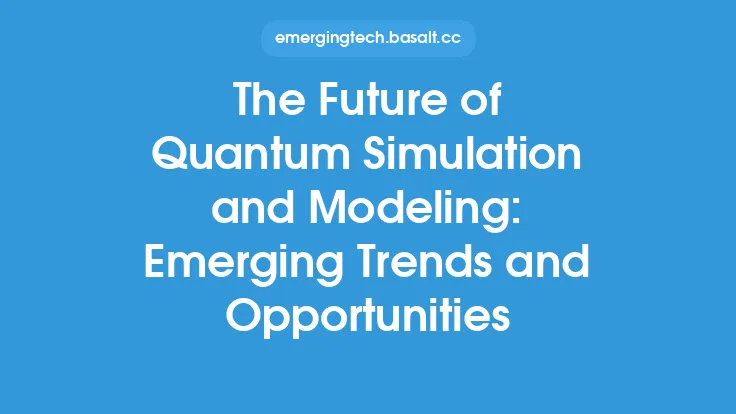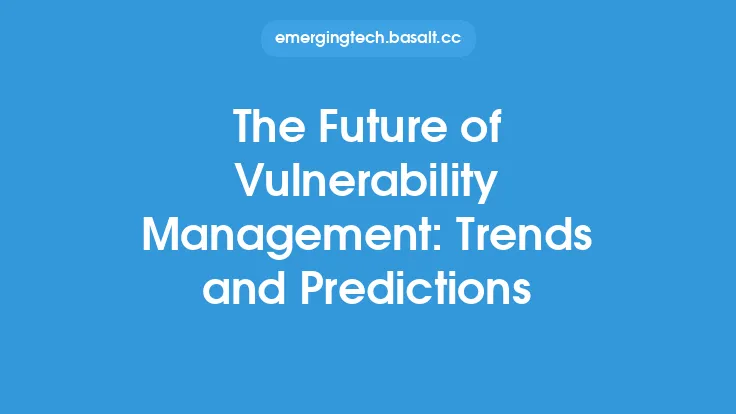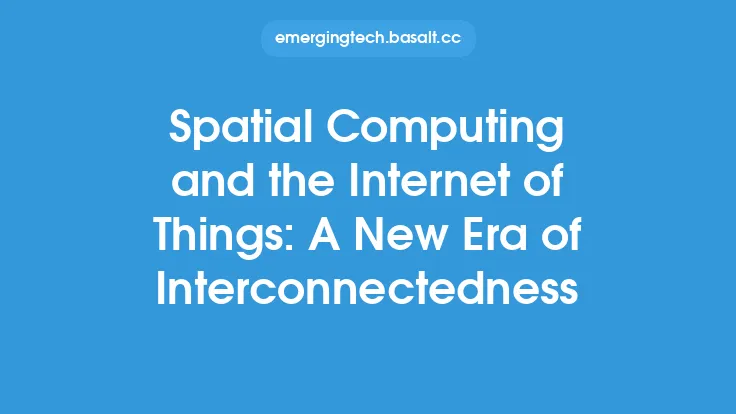The field of spatial computing has been rapidly evolving over the past few years, with significant advancements in technologies such as augmented reality (AR), virtual reality (VR), and mixed reality (MR). These technologies have enabled new forms of human-computer interaction, allowing users to interact with digital information in a more immersive and intuitive way. As spatial computing continues to advance, it is likely to have a profound impact on various aspects of our lives, from entertainment and education to healthcare and industry.
Introduction to Spatial Computing Trends
Spatial computing trends are focused on creating a more seamless and interactive experience between the physical and digital worlds. One of the key trends in spatial computing is the development of more advanced AR and VR technologies, such as standalone headsets and advanced tracking systems. These technologies enable users to interact with digital information in a more immersive and interactive way, using gestures, voice commands, and other forms of input. Another trend is the increasing use of artificial intelligence (AI) and machine learning (ML) in spatial computing, which enables more personalized and adaptive experiences.
Challenges in Spatial Computing
Despite the many advances in spatial computing, there are still several challenges that need to be addressed. One of the main challenges is the need for more advanced and affordable hardware, such as high-resolution displays and advanced tracking systems. Another challenge is the need for more content and applications that take advantage of spatial computing technologies, such as AR and VR experiences. Additionally, there are also challenges related to user experience, such as ensuring that spatial computing systems are easy to use and provide a comfortable and enjoyable experience for users.
Opportunities in Spatial Computing
The opportunities in spatial computing are vast and varied, with potential applications in fields such as entertainment, education, healthcare, and industry. For example, spatial computing can be used to create more immersive and interactive entertainment experiences, such as VR games and AR experiences. In education, spatial computing can be used to create more engaging and interactive learning experiences, such as virtual labs and AR field trips. In healthcare, spatial computing can be used to create more personalized and effective treatments, such as VR therapy and AR-based patient education.
Technical Aspects of Spatial Computing
From a technical perspective, spatial computing involves the use of various technologies, such as computer vision, graphics rendering, and sensor systems. Computer vision is used to track the user's movements and gestures, while graphics rendering is used to generate high-quality images and videos. Sensor systems, such as GPS and accelerometers, are used to track the user's location and movements. Additionally, spatial computing also involves the use of various software frameworks and tools, such as Unity and Unreal Engine, which provide a platform for developing and deploying spatial computing applications.
Spatial Computing and Human-Computer Interaction
Spatial computing has the potential to revolutionize human-computer interaction, enabling users to interact with digital information in a more natural and intuitive way. For example, users can use gestures and voice commands to interact with digital objects and environments, rather than using traditional input devices such as keyboards and mice. Additionally, spatial computing can also enable more collaborative and social forms of interaction, such as virtual meetings and AR-based games.
The Future of Spatial Computing
The future of spatial computing is likely to be shaped by several factors, including advances in technologies such as AR, VR, and AI, as well as the development of new applications and use cases. One potential trend is the increasing use of spatial computing in industries such as healthcare and education, where it can be used to create more personalized and effective treatments and learning experiences. Another trend is the development of more advanced and affordable hardware, such as standalone headsets and advanced tracking systems, which can enable more widespread adoption of spatial computing technologies.
Conclusion
In conclusion, spatial computing is a rapidly evolving field that has the potential to revolutionize various aspects of our lives, from entertainment and education to healthcare and industry. While there are still several challenges that need to be addressed, the opportunities in spatial computing are vast and varied, with potential applications in fields such as entertainment, education, healthcare, and industry. As spatial computing continues to advance, it is likely to have a profound impact on human-computer interaction, enabling users to interact with digital information in a more natural and intuitive way.





